- HANDSAW TYPES
-
- handsaw
- A frameless saw, as opposed to a bowsaw or other framesaw, used to cut wood.

- crosscut saw
- In this context, a handsaw used to cut a board through its width (across the grain).
The name is also used for manual saws designed to cut down trees.

- rip saw
- A saw with rip teeth meant for cutting a board along its length (with the grain).
- panel saw
- A handsaw 24 inches in length or less.
- backsaw
- A saw with a thick steel or brass spine, used for joinery or with a miterbox for accurate cutting.
- dovetail saw
- A small backsaw used for fine joints, particularly dovetails for drawers.
- SAW PARTS
-

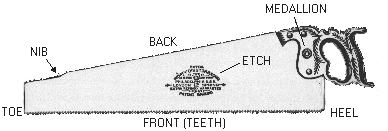
- parts of a saw
- The toe is the end of the saw away from the handle. The heel is the end near the handle. The front of the saw is the part where the teeth are found. The back is the part opposite the teeth that faces up in normal use. The nib is the bump on the back of many older saws, near the toe. It serves no purpose other than decoration. The etch and medallion are on the left side of the saw.
- medallion
- The name for the enlarged face of one of the saw nuts that holds the handle. It typically gives the brand name of the manufacturer or says Warrented Superior, which was common on what today would be called a generic brand saw. Patents for saw screws refer to the medallion as a label screw, and some collectors prefer that term.


- SAWTOOTH CHARACTERISTICS
-
- points per inch (PPI)
- The measurement of tooth pitch traditionally used by saw manufacturers. The number of PPI is always one more than the number of teeth per inch. To determine the number, line up the point of one tooth with an inch mark on a ruler. Include that point and count all additional points until you reach the next inch mark on your ruler. The number of points was stamped at the heel of the saw blade on most saws. That number is not the model number of the saw!
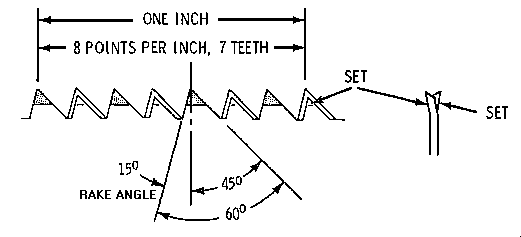
- teeth per inch (TPI)
- Method often used to measure saws today. See points per inch.
- rake angle
- The angle between the face of a saw tooth and an imaginary line perpendicular to the baseline of the saw teeth or front of the saw, seen when viewing a saw from the side. It is generally 12 to 15 degrees on a crosscut saw, and zero to eight degrees on a rip saw.
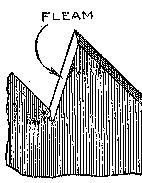
- fleam or bevel
- The angle that is filed into a crosscut saw's teeth, creating a knife edge that slices wood fibers when cutting. It is the angle of the intersection between an imaginary line perpendicular to the saw blade and the plane of the saw tooth, seen when viewing the saw's teeth face-on. On crosscut saws, fleam typically ranges from 15 to 25 degrees, depending on the saw's number of points (PPI) and whether the saw is used mostly in softwoods or hardwoods. Fleam can also be a compound angle, accomplished by tilting the file from its horizontal plane. This reduces fleam on the back of the saw teeth, and is far too complicated to explain here. Rip saws have zero fleam because the file is used perpendicular to the blade while sharpening.
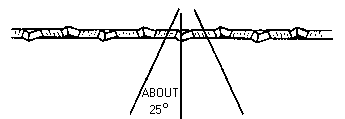
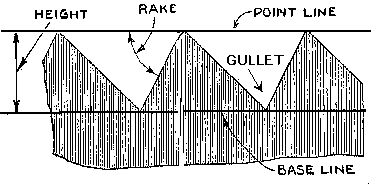
- baseline of teeth
- An imaginary line connecting the points at the bottom of each saw tooth, parallel to the front of the saw.
- gullet
- The space between a saw's teeth, where the saw dust is carried out. It is an equilateral triangle, just like the file that shapes the teeth.
- SAW CHARACTERISTICS
-
- taper grinding
- A process during the manufacturing of good-quality saws in which the back of the saw is ground thinner than the front, where the teeth are. The difference is tapered across the width of the saw. Double tapering is the additional thinning toward the saw's toe, along the length of the blade. Ideally the blade should not taper from heel to toe along the teeth, only along the area of the blade near its back.


- close-up or let-in handle
- The handle placement and shape that was developed by Disston in the 19th century, distinguishing their saws from traditional English patterns. The hand is above the heel of the saw rather than behind it, putting the hand closer to the work. Example of a saw with a close-up handle is the D-8, a traditional handle is on the No. 7 and 12.
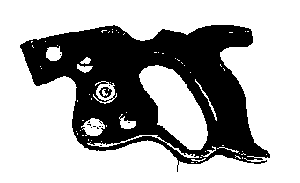
|
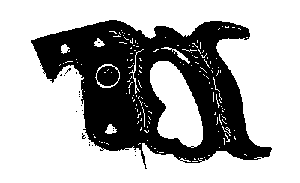
|

|

|
Let-in or Close-up Handle
D-8 Saw
|
Traditional Set-back Handle
No. 12 Saw
|
- skewback saw
- A saw design developed by Henry Disston in 1874. The back of the saw is concave to save weight. After it was patented, saws without the shape were marketed as "straightback" saws. The D-8 is a skewback saw.
- cast steel
- A name used in the 19th and early 20th century for the carbon steel that was used in saws. It can be hardened and tempered with heat. It came in various grades with names like silver steel, crucible steel, refined crucible steel, spring steel, London spring steel, extra refined London spring steel, et al.
- breasted saw
- The teeth on many handsaws are in a slightly convex arc instead of a flat plane. This may have been done to reduce friction as the teeth run through the wood. Some saws don't have breasting, and in some cases it was removed in the process of refiling the saw. The breasting effect is quite obvious on a one- or two-man crosscut saw for felling trees. On a hand saw it is much less, the blade is wider by about the height of saw tooth in the center of the blade. Backsaws never were breasted.


- MISCELLANEOUS TERMS
-
- kerf
- The area removed from a board by a saw, determined by the thickness of the blade plus the amount of set to the teeth. The wider the kerf, the harder the saw is to push while cutting.
- blister
- The sore you get on your hand if you try to use any of the junk saws with a poorly-shaped handle made in the last 30 years.
|
